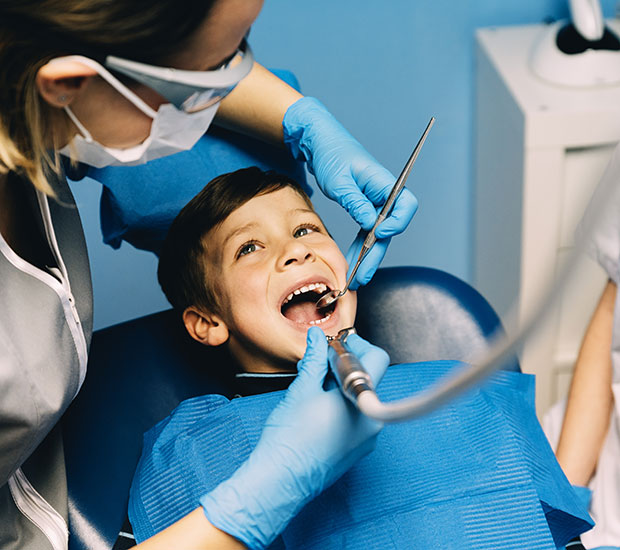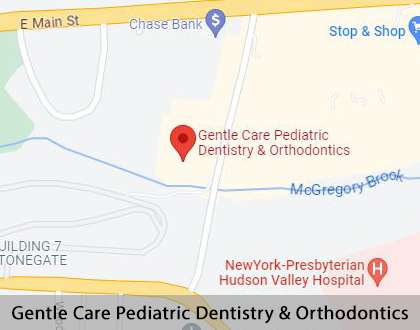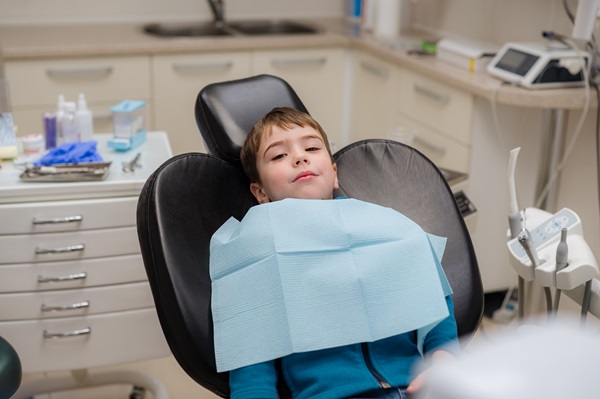What Is a Pulpotomy Peekskill, NY
If your child is diagnosed with a pulp infection, you might feel frightened or confused. Rest assured that treatment can help resolve the problem. Modern dental procedures can remove infected tissue from inside the tooth. Pulpotomies clear up the infection and get rid of stubborn tooth pain.
Pediatric dentists are available at Gentle Care Pediatric Dentistry & Orthodontics in Peekskill and the surrounding area. Our team provides in-depth care for patients struggling with pulp infections. We offer gentle, compassionate care for children of all ages. Call us at (914) 930-4465 to learn more.
When to Consider a Pulpotomy
Each tooth contains a soft, fleshy material known as pulp. The pulp contains nerves, blood vessels, and connective tissues. If dental pulp becomes infected or inflamed, a child may experience severe dental pain. Without treatment, tooth loss may occur.
Pulp often becomes damaged after an injury. A sports or auto accident can crack the tooth and trigger an infection. A severe cavity might also lead to an infection within the tooth. If the pulp has become infected, the dentist may recommend a pulpotomy.
During a pulpotomy, the dentist removes the pulp from the tooth's crown. The dentist leaves the roots intact. The tooth is not removed or destroyed. Instead, infected material is removed so the tooth can heal.
Pulpotomies are particularly helpful for preserving baby teeth. Early loss of baby teeth can cause problems with tooth spacing. Maintaining the baby teeth helps ensure that permanent teeth grow straight and even.
“Pulpotomies are particularly helpful for preserving baby teeth.”
Pulpotomy vs. Pulpectomy
Although the procedures are similar, a pulpotomy is different from a pulpectomy. During a pulpectomy, the dentist removes all pulp inside the tooth. Next, they fill the tooth with a special material. A dentist usually recommends a pulpectomy when the infection has spread below the tooth's crown. They often perform these procedures alongside a root canal. A pulpotomy removes only some of the pulp, leaving the roots untouched.
“A dentist usually recommends a pulpectomy when the infection has spread below the tooth’s crown.”
What Happens During the Procedure
Treatment begins with an X-ray and examination. The dentist discusses the treatment goals and expected outcome. The dental provider can explain how much pulp will be removed. They can also determine whether the child needs antibiotics to combat the underlying infection.
The procedure itself usually lasts between one to two hours. Before the procedure begins, the dentist will numb the area with a local anesthetic. In some cases, the provider may suggest general anesthesia or sedation. If the patient needs sedation, they might receive nitrous oxide, also known as "laughing gas." With this form of sedation, children remain awake. But they will stay calm and relaxed.
The dentist removes the decayed enamel with a drill. They penetrate past the decay and into the pulp. Next, they scoop out the infected pulp. The dentist fills the empty space with dental cement, then seals the tooth. Finally, the dentist places a cap on the tooth. This cap protects against future decay or damage.
“The dental provider can explain how much pulp will be removed.”
Check out what others are saying about our dental services on Yelp: What Is a Pulpotomy in Peekskill, NY
Comparing Pulpotomy to Other Dental Procedures
Pulpotomies are less invasive than root canals. If the infection has spread throughout the pulp and into the roots, a root canal may be the only option. During a root canal, the dentist removes all pulp to clear the infection. Afterward, they fill the tooth and apply a crown. If the child needs a root canal, they might be referred to another provider.
A pulpotomy is more invasive than a filling. When filling a cavity, the dentist only works on the outer surface of the tooth. They do not drill into the pulp. Instead, they remove the decayed enamel and dentin and then fill the space. If the child has already had a filling, parents can explain that the pulpotomy will be similar.
“If the child needs a root canal, they might be referred to another provider.”
Questions Answered on This Page
Q. Why is a pulpotomy performed?
Q. What is the difference between a pulpotomy and a pulpectomy?
Q. What happens during a pulpotomy?
Q. If the child needs a root canal, they might be referred to another provider.?
Q. What kind of at-home care is needed after a pulpotomy?
People Also Ask
Pulpotomy Aftercare
After the procedure is complete, the dental team monitors the child's recovery. They might have the child stay at the office for 30-60 minutes. Once they are confident the recovery is going smoothly, the child can be taken home.
If the child received a sedative or anesthesia, they might feel groggy or nauseated. These side effects usually wear off within a few hours. The numbing medicine will wear off soon.
Parents should not offer a child anything to eat or drink while their mouth is numb. Children might bite their numbed cheeks or tongue without realizing it. Once a child feels ready to eat, parents can offer soft foods and room temperature liquids. The dentist will explain when the child can resume their normal diet.
“Once a child feels ready to eat, parents can offer soft foods and room temperature liquids.”
Frequently Asked Questions
Q. What is a pulpotomy?
A. If your child has a damaged or decayed tooth, the dentist may decide to perform a pulpotomy. During a pulpotomy, the dentist removes infected pulp from inside the tooth. Then they fill the tooth and apply a cap. This procedure usually takes place during one office visit.
Q. What happens if I delay my child's pulpotomy?
A. Dental problems can worsen quickly. If the pulp becomes infected, the infection can spread throughout the tooth. Without treatment, your child may lose the tooth. In the worst-case scenario, the infection can even spread into their gums or bloodstream.
A. Report any dental injuries or tooth pain to the dentist right away. If you learn that your child needs a pulpotomy, do not put off the procedure.
Q. My child is nervous about their dental procedure. What can I do to help?
A. It is normal for children to be nervous about receiving a pulpotomy. Reassure your child that the pediatric dentist can repair their tooth. Let your child know that they will receive medication. This medicine will keep them calm and comfortable during the procedure. They will not feel pain during their procedure.
Q. Are pulpotomies painful?
A. During a pulpotomy, the dentist provides a numbing medication. In some cases, the dental team might also give your child laughing gas or anesthesia. These medications help ensure that your child feels no pain during the procedure.
A. Your child might feel some pain once the medication wears off. But over-the-counter medications can help ease their discomfort. Your dentist can explain which medications are safe after a pulpotomy.
Q. How much does a pulpotomy cost?
A. Costs vary depending on the patient's age, the type of sedation needed, and the chosen provider. Your dental insurance provider can offer more information about costs and coverage.
Quality Pediatric Dental Services Can Transform Smiles
By visiting us as soon as possible, our team can help get your child the professional treatment they need.
Definition of Pediatric Dental Terminology
Call Us Today
If your child needs a pulpotomy, don't panic. While this procedure might sound alarming at first, it is a simple process. Pulpotomies get rid of the infection and remove stubborn decay. They preserve the tooth and prevent dental problems down the road. Modern dental techniques can make this procedure virtually pain-free. A dentist usually completes it in a single office visit.
If your child needs a pulpotomy, let Gentle Care Pediatric Dentistry & Orthodontics in Peekskill help. Call us at 914-930-4465 to schedule a consultation.
If you live in the Peekskill area, call 914-930-4465 for an appointment in our Peekskill office.
Helpful Related Links
- American Dental Association (ADA). Glossary of Dental Terms. 2023
About our business and website security
- Gentle Care Pediatric Dentistry & Orthodontics was established in 2009.
- We accept the following payment methods: American Express, Cash, Check, Discover, MasterCard, and Visa
- We serve patients from the following counties: Westchester County and Putnam County
- We serve patients from the following cities: Peekskill, Garrison, Cortlandt Manor, Mohegan Lake, Yorktown Heights, Buchanan, Verplanck, Montrose, Putnam Valley, Jefferson Valley, Croton-on-Hudson, Beacon, West Point, Shrub Oak, and Mahopac
- Norton Safe Web. View Details
- Trend Micro Site Safety Center. View Details
Back to top of What Is a Pulpotomy







